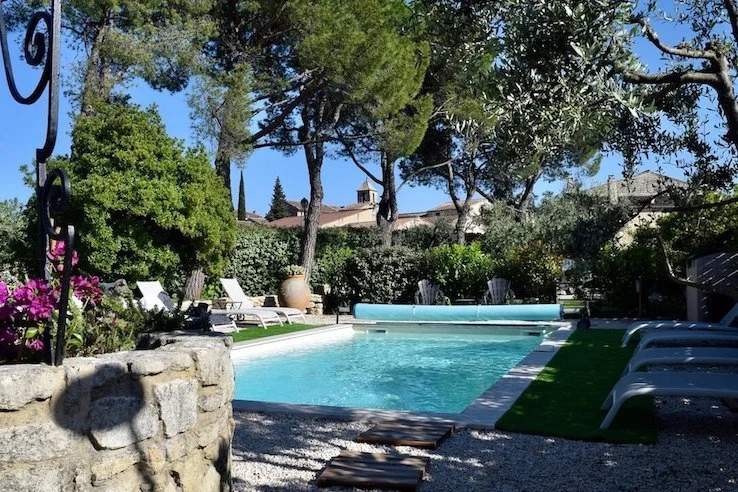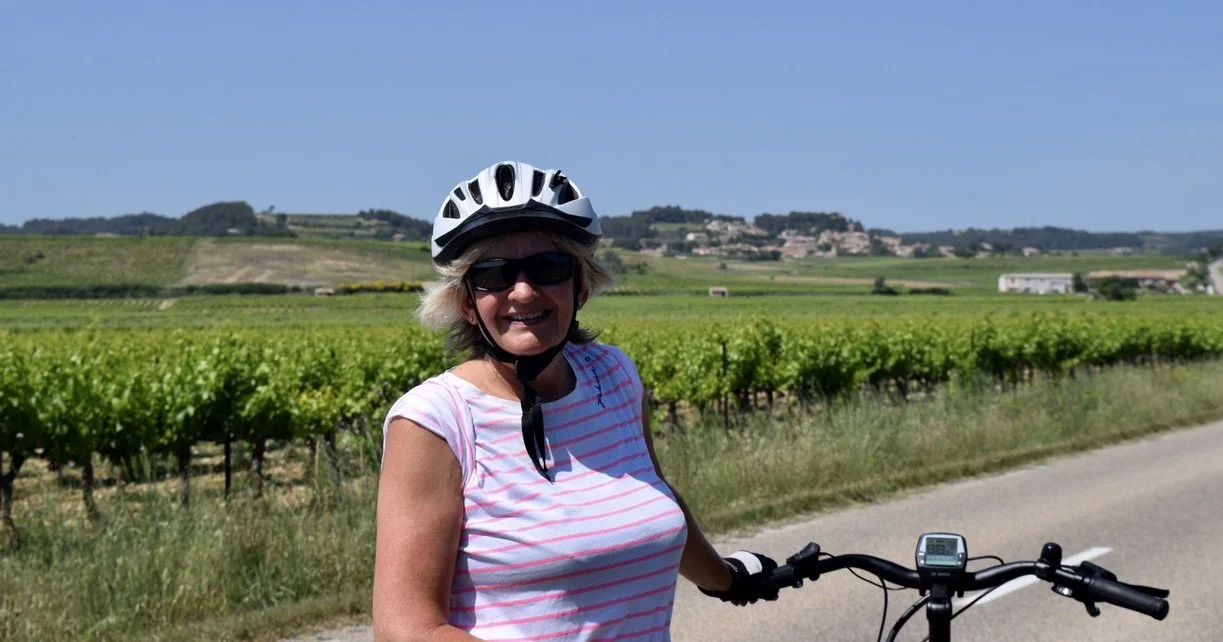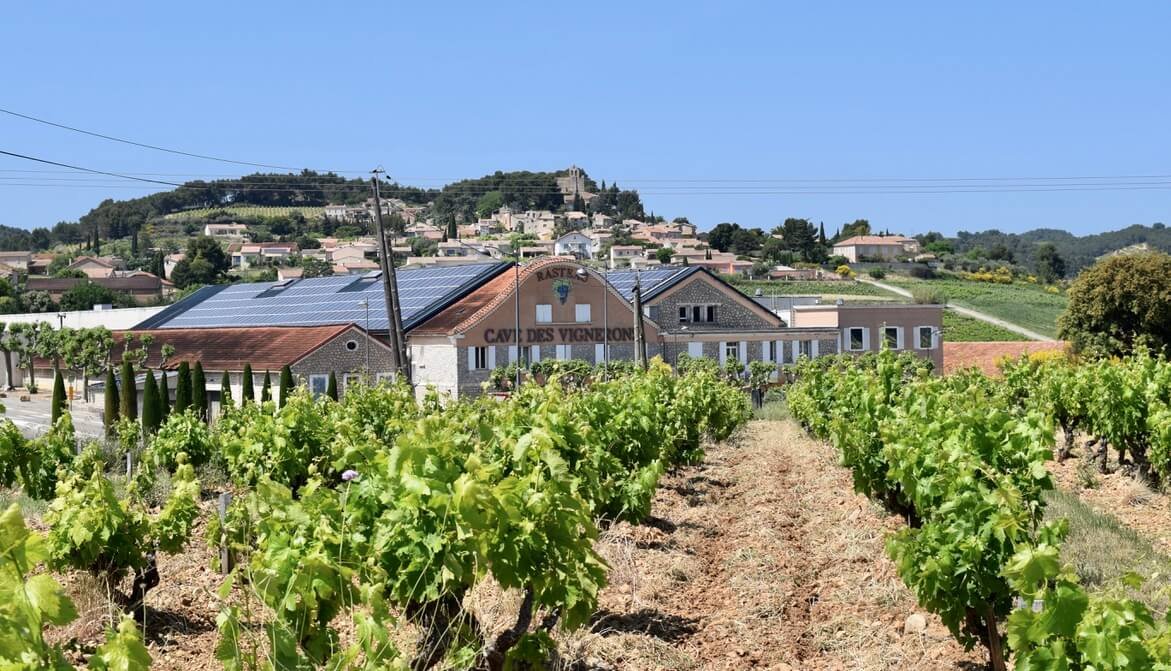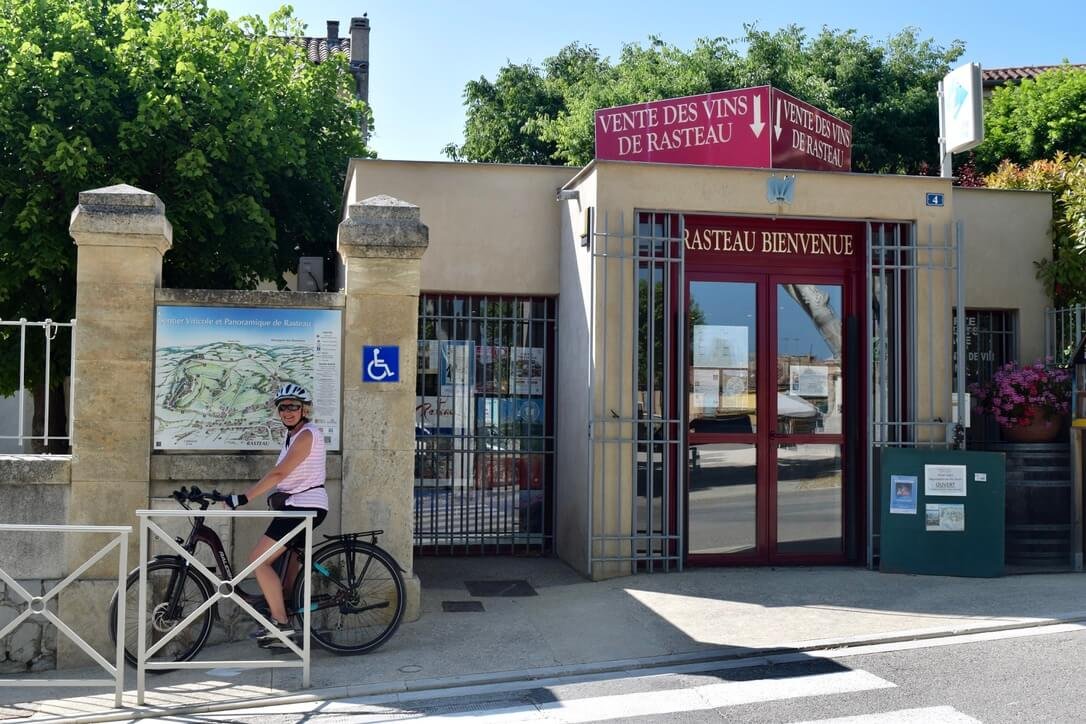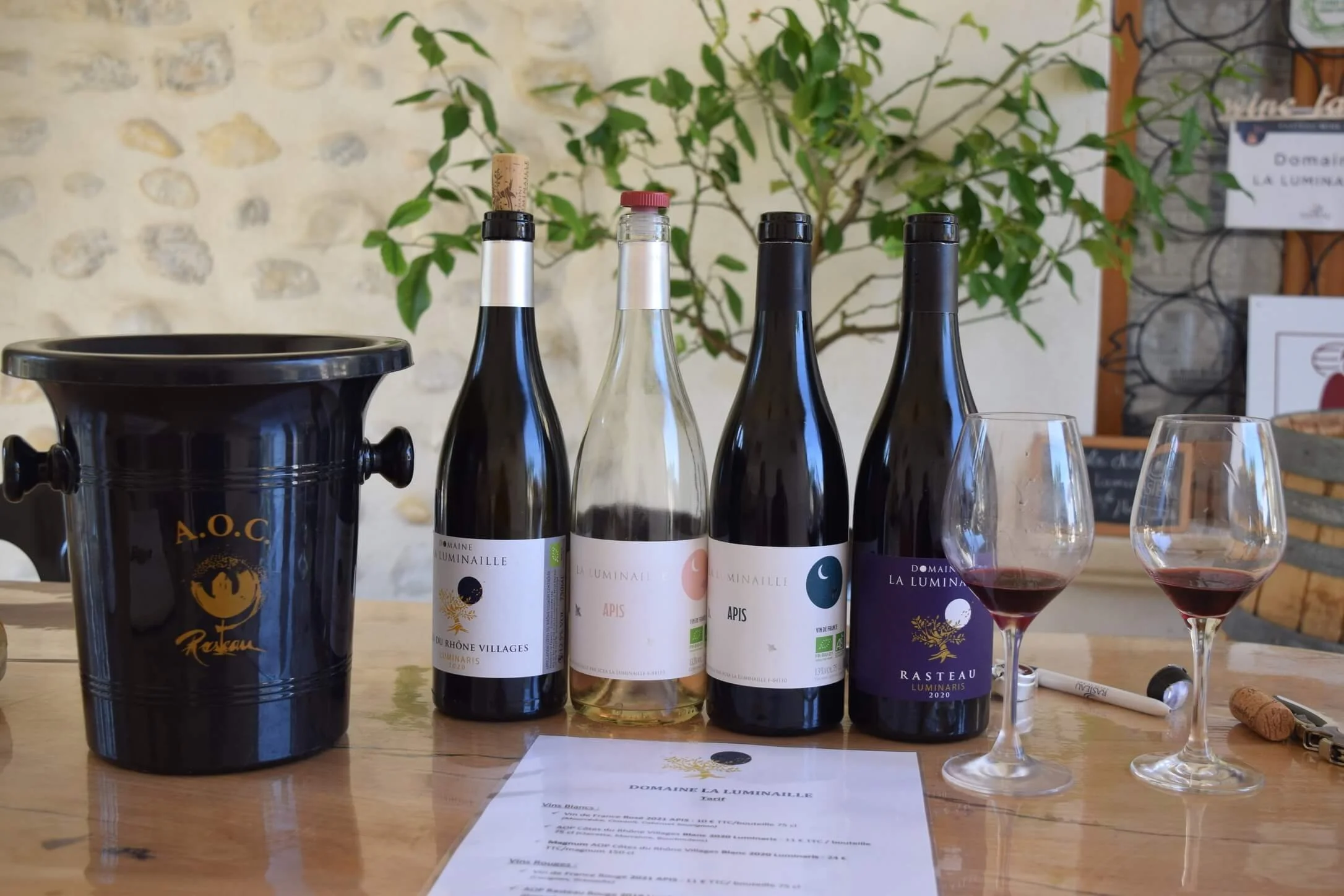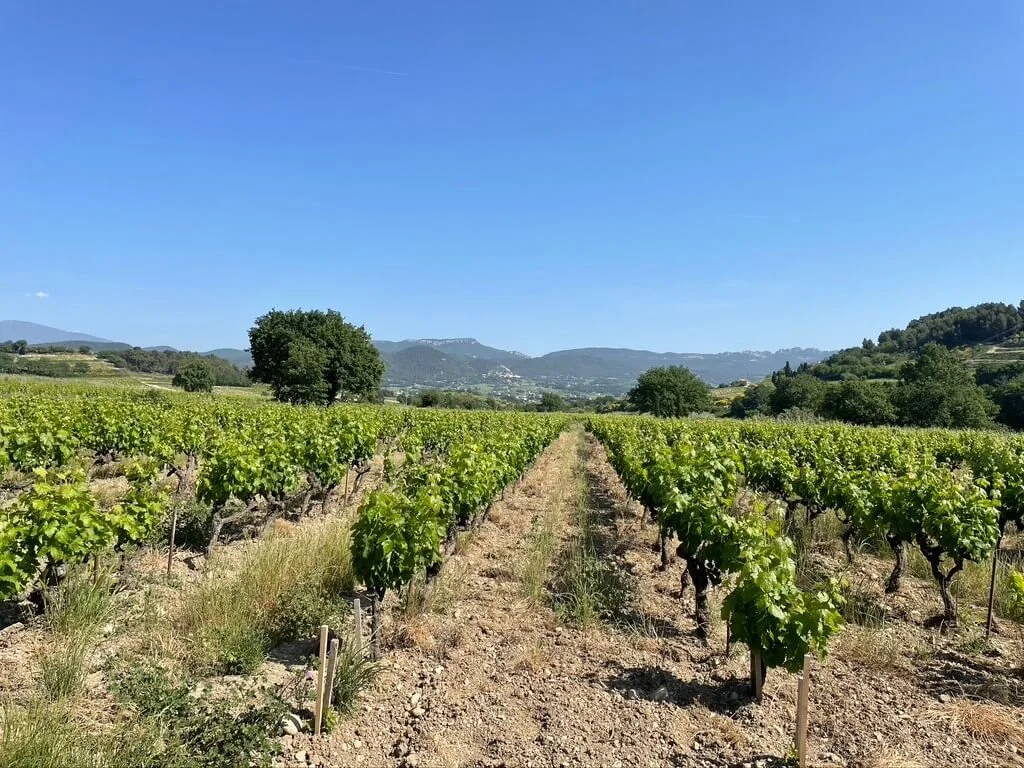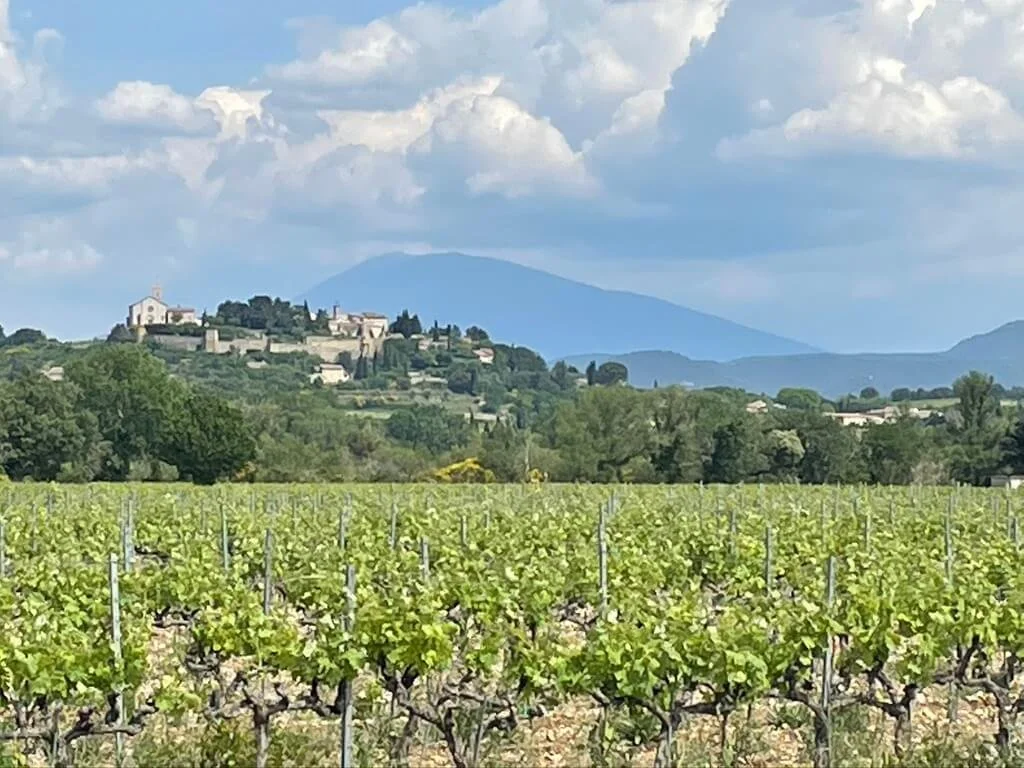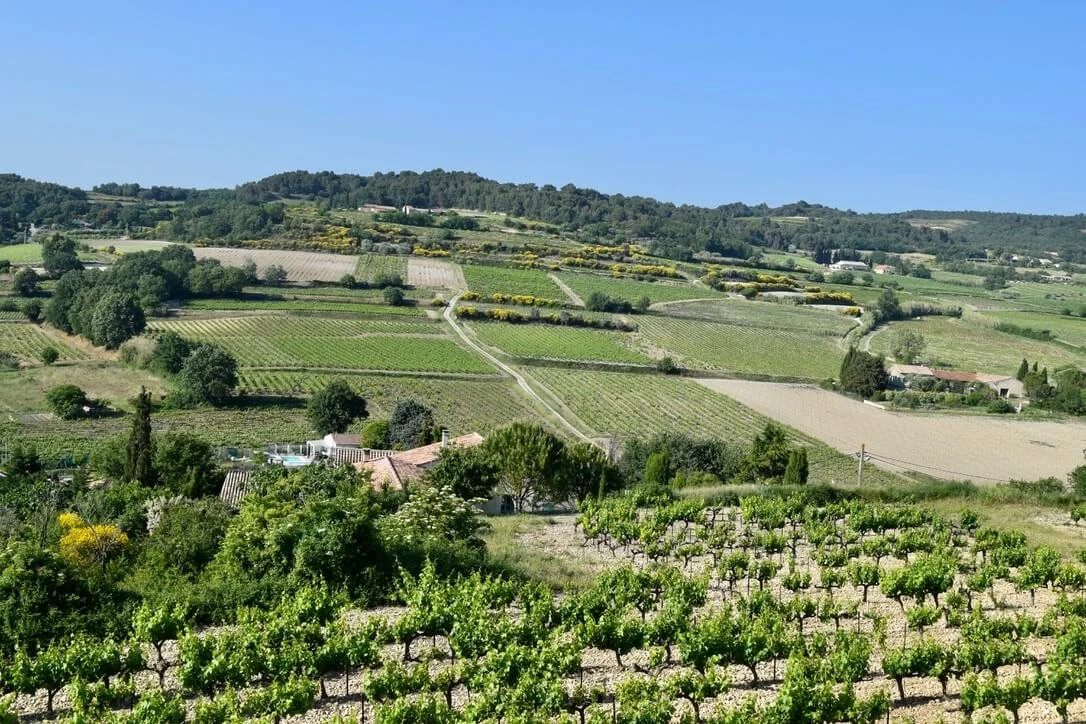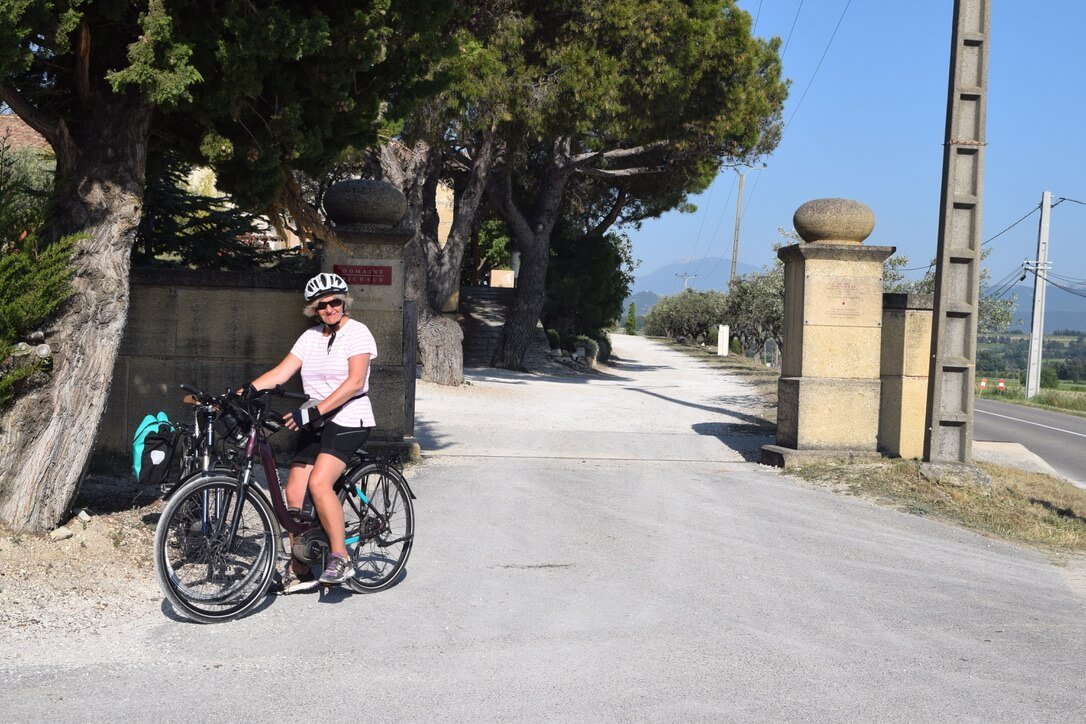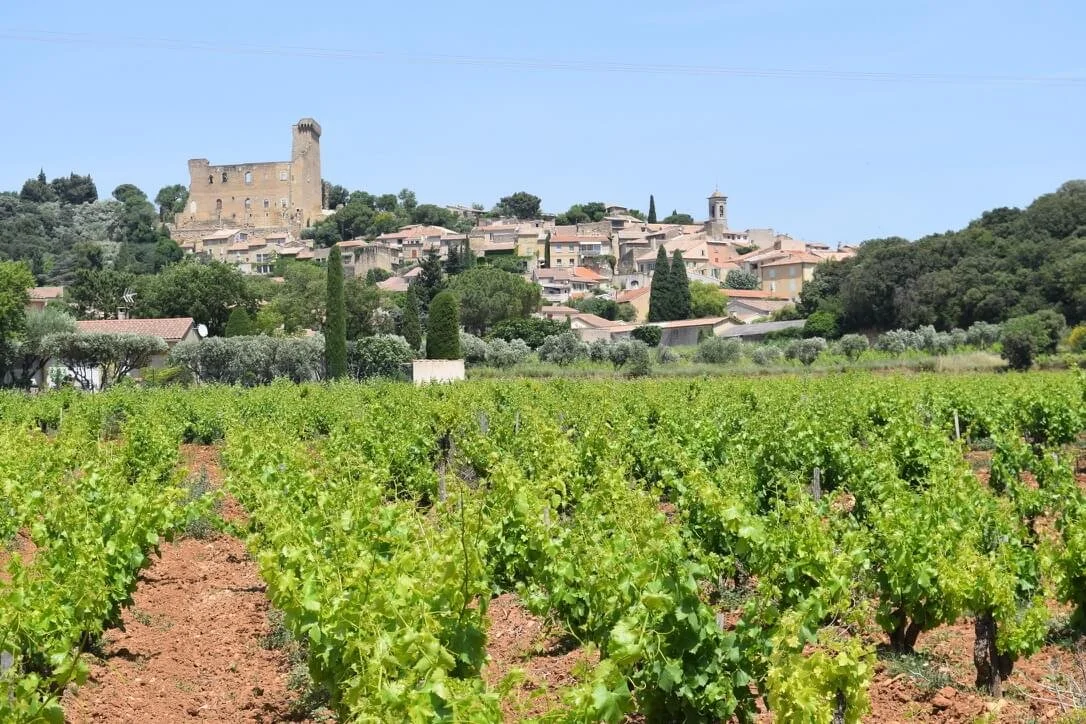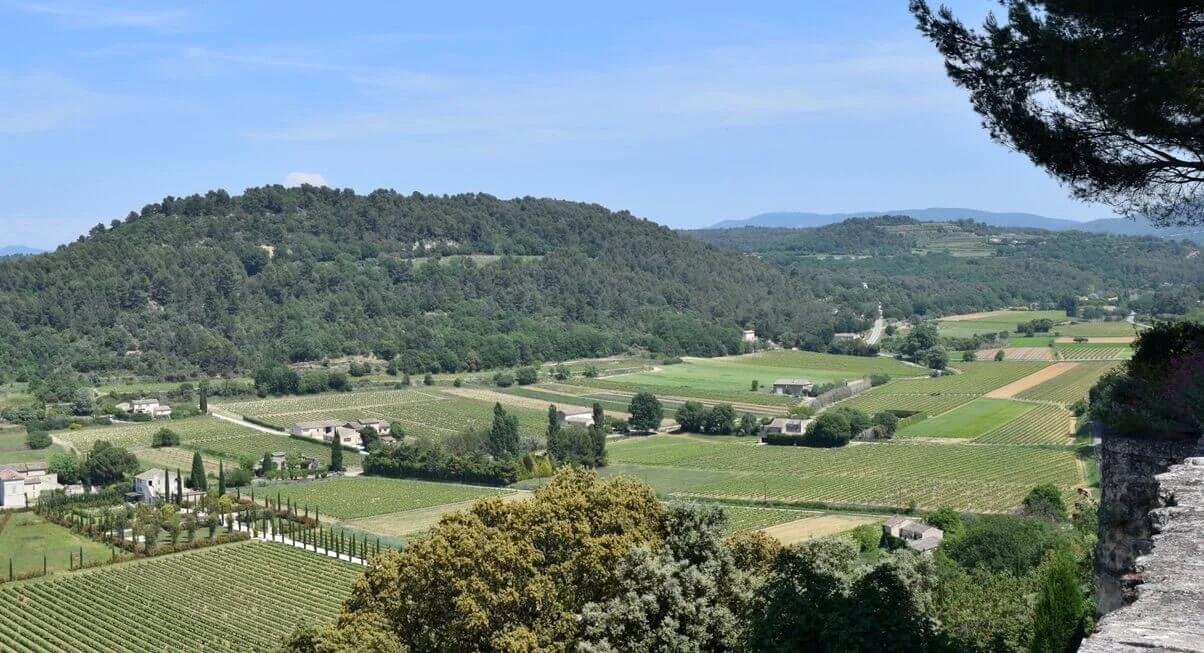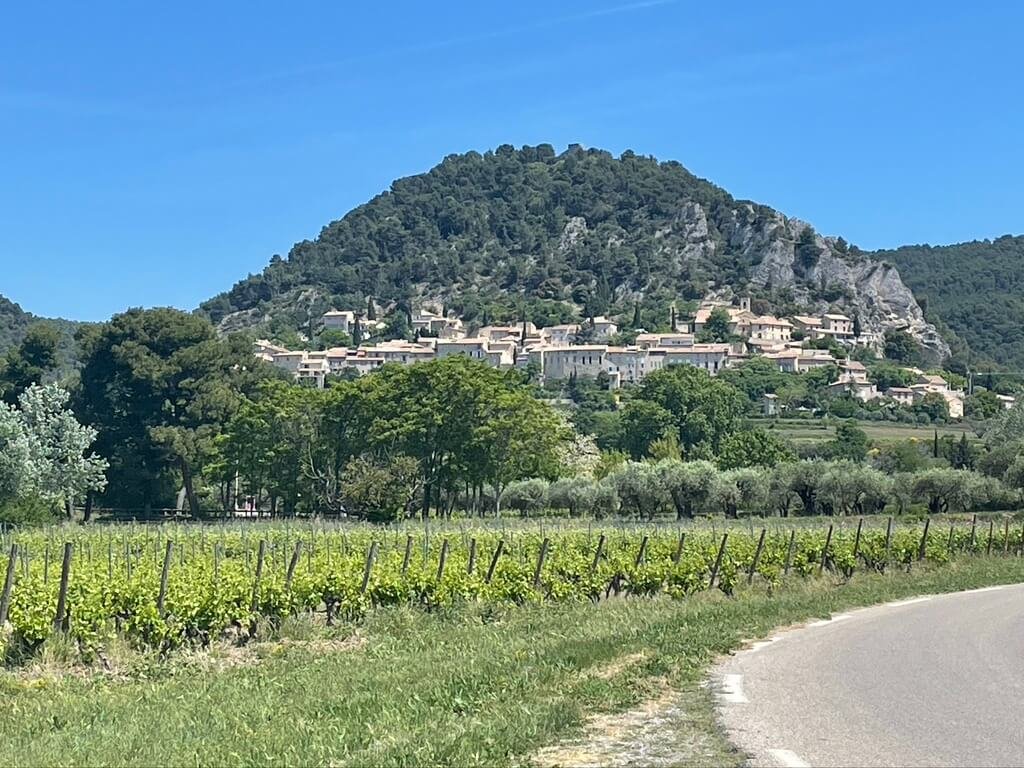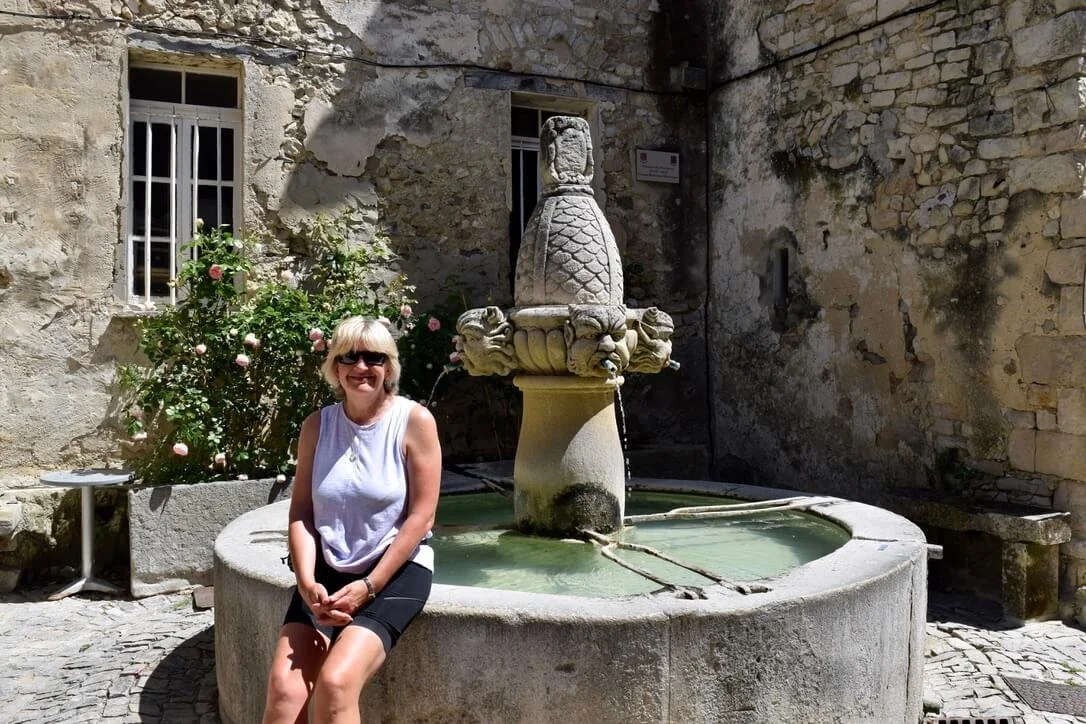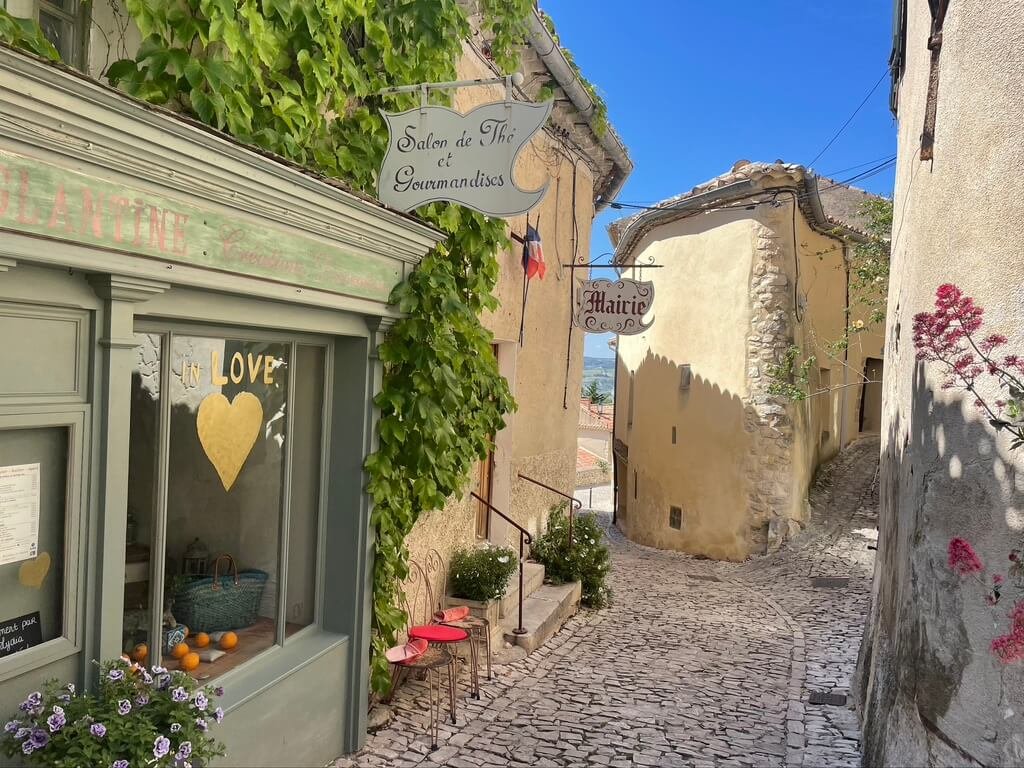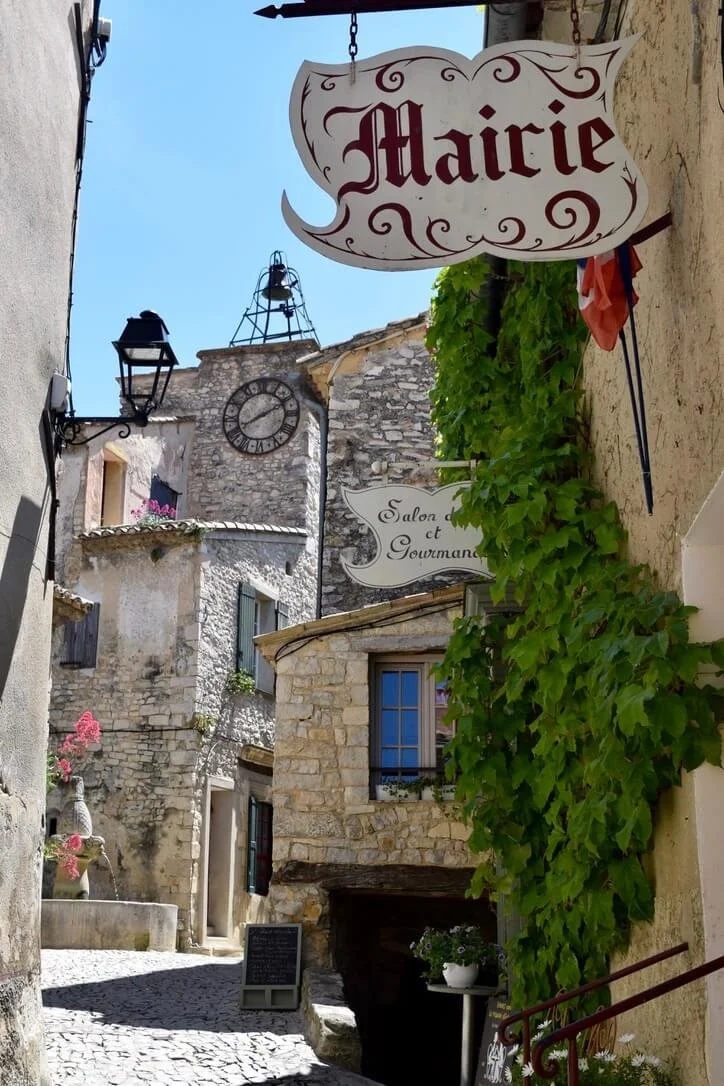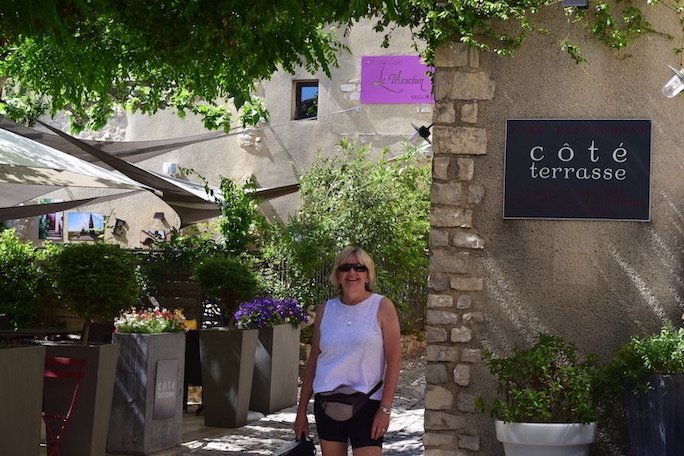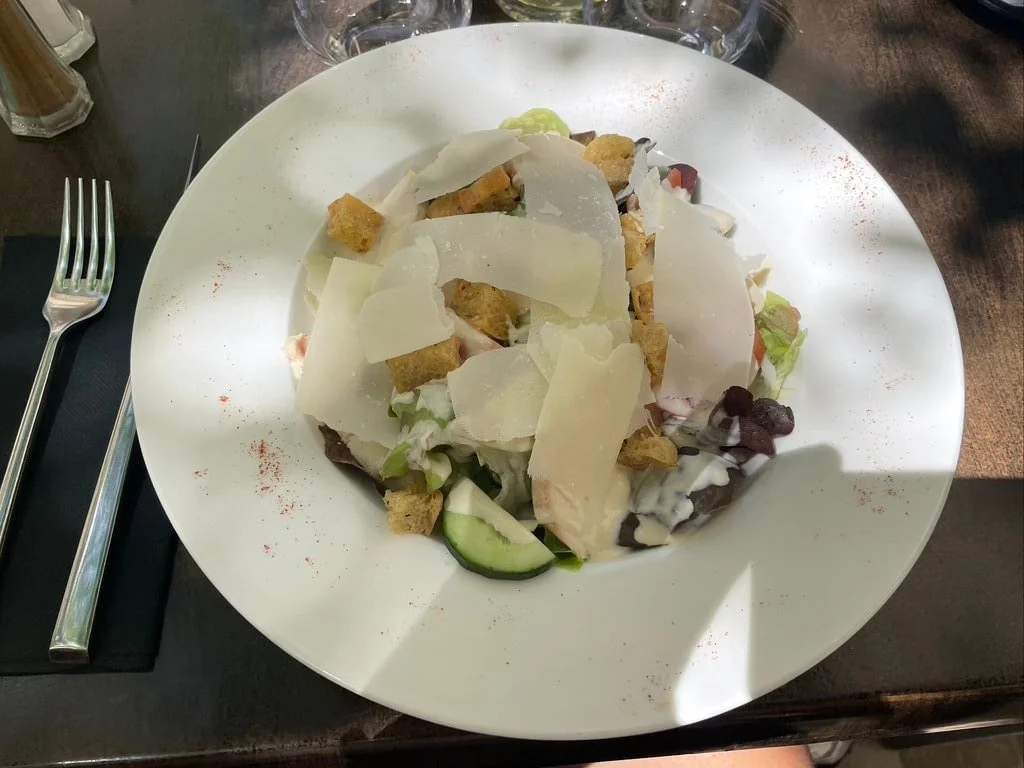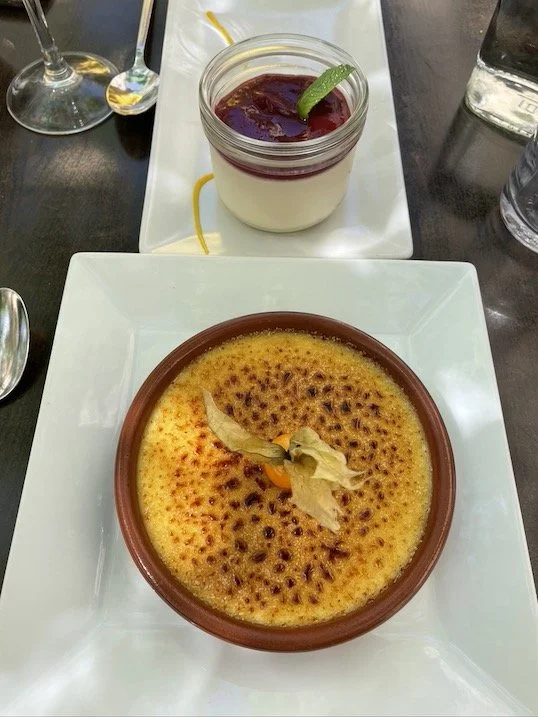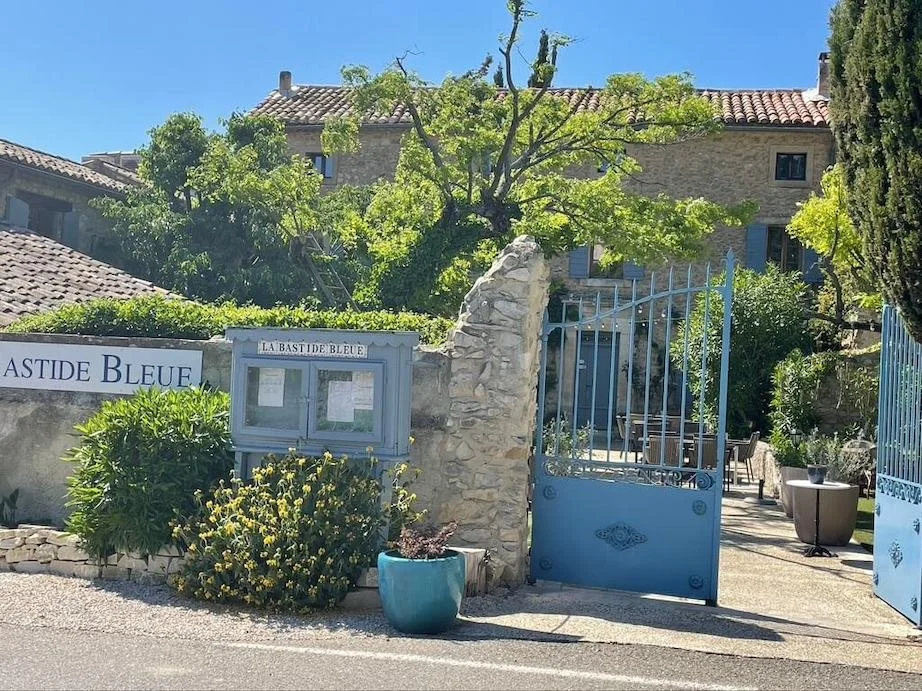Southern Rhône bike tour - Rasteau and Cairanne
Discovering Rasteau wines and Cairanne wines on a 1 day bike tour, cycling in Southern France in the Southern Rhône
Arriving at our winery visit and wine tasting in Rasteau, in Vaucluse, Southern Rhône
If you like your fruity, jammy, full, but excellent value Rhône red wines, then they probably come from the hotter, more Mediterranean Southern Rhône wine region and I’m sure you’ve heard of its famous wines - Châteauneuf-du-Pape being probably the most well known. However you’re probably less likely to have heard about the Rasteau wine region or the Cairanne wine region….
We were keen to discover more about the Southern Rhône and took the opportunity whilst we were in the area, with our bikes, to explore these two lesser-known, but very much respected, Southern Rhône wine regions - to explore the wines, the villages and the amazing scenery!
Read on to see what we discovered during our 1 day bike tour of Rasteau and Cairanne!
Also see here for our wine tour by bike of nearby Vacqueyras and Gigondas.
The Southern Rhône wine region
The Southern Rhône wine region is made up of two French départements, divided by the River Rhône. The département of Gard lies on the western side of the famous papal city of Avignon, with the beautiful Roman cities of Arles and Nîmes and the natural wonder that is the Camargue. On the eastern side lies the vast département of Vaucluse , spread out to the east of the city of Orange, the home of Côtes du Rhône wines.
Vaucluse is real Provence country and home to many of the well-known Southern Rhône wine appellations and stunning wine villages of the same name - ie. Châteauneuf-du-Pape, Gigondas, Cairanne, Rasteau, Vacqueyras and Beaumes de Venise.
So for this wine tour, we headed into Vaucluse to explore the beautiful wine villages of Rasteau and Cairanne.
Exploring Southern Rhône by bike! Villages of Séguret & Sablet in the background - Source: Wine Keller
The Southern Rhône wines and wine appellations
See here for general information on the Southern Rhône wines and grape varieties, the Southern Rhône appellations - or AOCs - and the Rhône Valley wine map.
We were keen to get to know better the famous Rhône red wines, based mainly on the Grenache grape variety, but also to discover something new, especially in the area of white wines, which the area is starting to become better known for.
The distinctive bottle emblem
The Southern Rhône villages applied for their own AOC status at different times, having proven the quality of their wines and been promoted through the ranks of ‘Côtes du Rhônes’, ‘Côtes du Rhônes-Villages’ and ‘Côtes du Rhônes-Villages-’xx village’’.
The distinctive embossed bottles, with the crossed keys can be used all across the Rhône Valley region, but only for ‘cru’ or AOC wines. This example being for an AOC Vacqueyras wine.
AOC Rasteau - Rasteau wines
AOC Rasteau and AOC Cairanne are located, side by side, just north of neighbouring Southern Rhône wine regions, Gigondas and Vacqueyras.
Already having AOC status since 1944 for its sweet, red ‘vin doux naturel’ fortified wines, Rasteau won its AOC status for dry red wines in 2010. Some 1000 hectares of south-facing vineyards stretch across the hillsides of Rasteau village, which sits on a hill, at an altitude of 200m.
Rasteau is actually one of the more successful Côtes du Rhône villages in the Southern Rhône, making wines to often rival Châteauneuf-du-Pape, however they are seen to be less elegant than neighbouring Cairanne wines (see below). Much of its success lies in its varied soils, which give the dry red wines their power and richness of flavour.
Grenache is the dominant grape varietal and Mourvèdre and Syrah the main blending partners.
Rasteau vin doux naturel
Rasteau is still known for its sweet, strong fortified wine, vin doux naturel, made from a mixture of just-fermenting Grenache grape juice and pure grape spirit. The majority of the grapes must be Grenache noir, gris and/or blanc. Although this sweet wine takes the name ‘Rasteau’, the grapes may be grown anywhere in the communes of three Côtes du Rhône villages: Rasteau, Cairanne and Sablet.
AOC Rasteau
AOC Cairanne
AOC Cairanne - Cairanne wine
Cairanne may not be as well known as some of the other Southern Rhône regions, however it can boast to be one of the most exciting!
Cairanne was officially elevated to a Côtes du Rhône ‘cru’ status in 2016, when it was awarded its own AOC. The appellation covers the single village of Cairanne and just over 1,000 hectares of vineyards and is one of the highest Côtes du Rhône villages, producing some of its best wines.
What type of wine is Cairanne?
95% of the wines produced are red, with Grenache being the dominant grape varietal. The region is well suited to Syrah and also Mourvèdre, which are both used in blends.
Cairanne red wines tend to be complex, smooth and elegant, with lots of red fruit and spice flavours. They are meant to be enjoyed young, but also have good ageing potential.
Cairanne white wines tend to be floral, with fruity, mineral flavours and are based on a blend of Clairette, Grenache Blanc and Roussanne grape varieties.
Cairanne wine producers form a vital and central part of the village community. Notable producers include: Domaine Alary, Domaine Brusset, Domaine de l’Oratoire St-Martin and Domaine Richaud.
Our bike tour of Rasteau and Cairanne
In May 2022 we spent a few weeks in France, exploring different wine regions and decided to base ourselves in Vacqueyras for 5 days to explore the surrounding wine villages and Southern Rhône AOCs. We had driven with our own car from England, taking our bikes with us and with the fabulous weather, were very keen to do some cycling in Southern France!
We decided to take 1 full day to visit both the Rasteau wine region and the Cairanne wine region, having already visited the Vacqueyras and Gigondas regions by bike the previous day! This meant following some of the same cycle route, but that was certainly no hardship as the scenery was stunning!
Enjoying exploring the southern Rhône vineyards by bike
Our accommodation in Vacqueyras
We decided to make Vacqueyras our base whilst exploring the Southern Rhône tour, as it’s so central to the wine villages and sights like Mont Ventoux and the Dentelles de Montmirail. We found a delightful ‘chambre d’hôte’ on AirBnb called Terre de Bacchus, located at the top of the village, with everything within easy walking distance and amazing views to the stunning ‘Dentelles’ (see later).
We had our own ground floor apartment with a sleeping and living area, a small but well-furnished kitchen and a bathroom with a shower. We had our own private terrace area, with a table and chairs, where we enjoyed relaxing in the evening and there was also a lovely outdoor pool and a place to safely store our bikes and park the car. The hospitality was wonderful, with the owners offering lots of tips about where to go and what to do. Note - the owners do not speak English, so you need some French to get by here!
We can’t recommend Terre de Bacchus enough and hope to return one day soon. We loved it so much that we actually returned a week after our planned stay for two more nights!
An outline of our bike tour
Our planned route was based on one of the many Provence cycle routes offered by ‘La Provence à Velo’ - a really useful guide it you plan on doing some cycling in Southern France!
Route no. 29 is called ‘Cycling around Vaison-Ventoux’, which offers beautiful views of the Côtes du Rhône vineyards and the Dentelles de Montmirail and takes in the villages of Rasteau, Cairanne, Violès, Sablet, and Séguret, one of the most beautiful villages in France.
You can follow the route online or via a map to be found in all of the local tourist offices.
We started our bike tour in Vacqueyras, then rather than continuing onto Gigondas as we had done the day previously, we picked up Route 29, which took us a different route to the lovely village of Sablet, where we then forked left towards Rasteau. From here we progressed onwards - and upwards (!) - to the stunning, hilltop village of Cairanne, before taking the circular route back through the vineyards and back to Vacqueyras.
The whole route was approximately 35km and took us another full day. It was tough in parts as the weather was so hot, but with e-bikes it wasn’t too strenuous and again, we enjoyed the most amazing day out, discovering the beautiful villages and vineyards of the Southern Rhône!
Vineyards outside Rasteau, with Mont Ventoux in the background
The Dentelles de Montmirail
When you explore this region, the towering spectacle of Mont Ventoux - the ‘Giant of Provence’ - is never far away at over 1900m high, but just as impressive, are the beautiful jagged peaks of the Dentelles de Montmirail. Named after its spectacular, jagged, saw-toothed limestone crests, the Dentelles stand out distinctly from the surrounding olive orchards and vineyards and provide some of the best and most dramatic scenery in France.
The Dentelles de Montmirail mountain range is a magnet for nature lovers, hikers and cyclists alike, but of course, also for wine lovers. You can follow the ‘Côtes du Rhône’ wine route to explore the area in and around the Dentelles, which comprise 11 distinct towns and villages - many of course, famous for their AOC wines - including Beaumes de Venise, Crestet, Gigondas, La Roque-Alric, Lafare, Le Barroux, Malaucène, Sablet, Suzette, Vacqueyras, Vaison la Romaine to the north of the Dentelles, and Séguret, listed among the most beautiful villages of France.
The amazing Dentelles de Montmirail in Vaucluse, France
Discovering Rasteau and its wines
After leaving Vacqueyras in the morning, we followed the route to the village of Sablet, where we stopped for a well-earned drink, then continued on through the vineyards, under the gaze of the ever-present Dentelles de Montmirail and Mont Ventoux, until we saw the village of Rasteau come into view on the hillside ahead.
As you enter Rasteau you come to ‘Rasteau Cave des Vignerons’ - a great place to sample Rasteau wines. We decided to continue on as we had a winery appointment on the other side of the village and didn’t want to be late!
Rasteau is a small commune in Vaucluse, with a population of under 1000, located on the banks of the Ouvèze river. The south-facing vineyards around the village are, to be honest, the main attraction of this small village. The views are stunning across the undulating landscapes and towards the peaks of the Dentelles de Montmirail.
We cycled up to the centre of Rasteau, through the main square, following signs for Domaine La Luminaille, which led us across several kms of beautiful rolling countryside and vineyards, until we eventually reached our destination!
Wine tasting at Domaine la Luminaille
Domaine la Luminaille is a fifth generation family estate, covering some 15 hectares of organic vineyards and also, olive trees. ‘La Luminaille’, an old Provençal word, takes its name from the radiance of the olive leaves during a full moon and has some of the best terroirs in the Rasteau AOC. At 250m above sea-level, the vines flourish in the diverse range of soils, producing wines with a combination of superb freshness and concentration.
The diverse terroir enables different grape varieties to flourish including: Grenache Noir, Syrah, Carignan, Mourvèdre, Cinsault, Clairette blanc and Clairette Rose, Bourboulenc and Marsanne.
At the helm today is Julie Paolucci, who took on the responsibility in 2015, after her father suddenly passed away. With a background as a sommelier, working in Paris, Julie continued the work her father, Jean-Claude Paolucci, had started, to develop the vines, to reduce their yields to improve the quality of the wine and achieve organic certification. She is seen as a leading light in the Rasteau appellation for producing balanced wines, with lots of mineral flavours. Julie is the first to actually produce La Luminaille wines here, having built a new winery in 2016.
Wine tasting at Domaine la Luminaille, with Julie Paolucci - Source: Wine Keller
The small range of excellent wines includes 2 reds under the AOC Rasteau, one made from the oldest vines, which has excellent ageing potential, a white ‘Côte du Rhône’ wine and a sweet fortified ‘vin doux’ wine, made with grapes from Grenache vines, almost a century old.
We had the opportunity to taste these wines with Julie, as well as new rosé wine, which was equally delicious.
We were incredibly impressed with Julie’s wines and would really recommend a visit and wine tasting at Domaine La Luminaille if you are in Rasteau. Julie welcomes visitor Monday-Friday, but you need to make contact in advance to arrange an appointment.
Julie’s wines are available around the world and are imported in the UK by Vine Trails.
Discovering Cairanne and its wines
Following our visit and wine tasting at Domaine La Luminaille, we returned to Rasteau’s village square to eat our sandwiches and then got back on the saddle and continued our bike tour towards the nearby village of Cairanne.
Cairanne is located in Upper Vaucluse, a charming village, surrounded by vineyards, with its lovely old town on the hill. Here you can explore the small alleyways, climbing up the steep stairway to discover the old dungeon and the 18th century St Roch Chapel and Autanne Gate. From here you can walk along the path of the original village ramparts (1123), with its old towers and superb views of the Ventoux and Saint-Andeol hill.
Views over the Cairanne vineyards from the old town - Source: Wine Keller
After our wine tasting visit (see below), we enjoyed a drink at a local bar and then cycled up to the highest point of the old village of Cairanne (thanks to the e-bikes!) to enjoy the wonderful views. The winery we were visiting, Domaine Richaud, is located on the main road between Rasteau and Vaison-La-Romaine, on the outskirts of Cairanne, so it made sense to visit the village after our tasting.
Wine tasting at Domaine Richaud
Domaine Richaud is very much known still as Domaine Marcel Richaud, named after the man who created the estate and today is a pioneer in viticultural practices and the undisputed leader of natural wine in the Rhône Valley.
Marcel Richaud built and developed the estate with great patience and a focus on creating wines which are as natural as they can possibly be. Marcel was the fifth generation in his family to make wine and today he works alongside his children, Thomas, Claire and Édith, who will inherit the estate from him.
The estate is certified organic today and all 30 hectares of vineyards are harvested by hand by a team of 30 people. Many of the vines are between 40 and 70 years old, producing an incredible concentration of fruit flavours.
Domaine Richaud has a reputation for producing some of the finest wines of the Southern Rhône, characterised by bright fruit, superb balance and great drinkability.
In terms of the vinification process, it is all natural, with no inputs, no filtration and real vintages. Each terroir and grape variety is vinified separately, producing wines which are as expressive, pure and authentic as possible.
The range of wines is comprehensive, covering AOC Cairanne reds and a white and a selection of both Côtes du Rhône and Vins de France wines. The dominant grape varieties are Grenache, Mourvèdre, Syrah and Carignan and for the white wine, predominantly Clairette and Grenache Blanc.
We enjoyed a tasting of 6 different wines - we especially liked the Cairanne white, 2021 and the Côtes du Rhône ‘Terre d’Aigles’, which was delicous!
Domain Richaud provides an excellent introduction to Cairanne wines and is widely regarded as one of the best producers in the appellation. They also have a guest house you can rent out, very close to the domaine, with fabulous views over Mont Ventoux and the Dentelles de Montmirail!
Contact ahead to arrange an appointment to visit.
Tips and travel guide for visiting Rasteau and Cairanne by bike
When to visit
The best time to visit is April - July (we visited in May and it was beautiful). August can be extremely hot and busy and many wineries will be closed to visitors. September is harvest time, so you may not be able to visit some wineries.
How to get to the Southern Rhône wine region
The closest international airports to the wine villages of the Vaucluse region of Provence are Marseille and Nimes. Avignon airport is closer, but only offers internal flights. The Avignon TGV is served by the Eurostar from London.
Visiting wineries in the Southern Rhône
You will find a warm welcome at wineries in the Southern Rhône, but always try to call and arrange in advance. Always avoid lunch time - everything tends to close between 12pm and 2.30pm - also quite often on a Monday.
Other Rhône valley wine regions and villages to explore
The beauty of spending time in the southern Rhône region is that you can combine multiple wine appellations in one trip. We did just this and were able to visit many well-known Rhône Valley vineyards and regions in the space of a week. Wine villages like Châteauneuf-du-Pape, Vacqueyras, Gigondas, Ventoux and Beaumes-les-Venise are all within easy reach of Cairanne and Rasteau.
Luberon
The beautiful Luberon region is not far away - another Rhône Valley appellation - and the amazing Luberon Regional Nature Park. Straddling the départements of Vaucluse and Alpes-de-Hautes-Provence, Luberon, said to be the real, authentic Provence, is famous for being the former home of author Peter Mayle and for its medieval hilltop villages.
Visit Séguret
Make time to visit this beautiful village, classified as one of the 'most beautiful villages in France'.
Séguret is a typical mediaeval Provençal village, with bags of charm and character! We entered the village by way of the impressive and original village gate - Porte Reynier - having locked up our bikes here to avoid having to push or ride them over the windy, steep in places, cobbled streets.
There is lots of evidence of mediaeval times as you wander through this picturesque village, including the Mascarons fountain, a listed historic monument, the Romanesque church dating from the 10th-12th centuries and the old 17th-century belfry.
We wandered the pretty streets, soaking up the atmosphere and enjoying the incredible views, especially from the top of the village and the old castle ruins. There are plenty of artisanal shops to browse around and bars and restaurants. We enjoyed a wonderful lunch at a café/restaurant called Côté Terrasse, which included probably the best crème brûlee we have ever tasted! We were also recommended a restaurant/hotel just outside Séguret, called La Bastide Bleue, which looked amazing, but unfortunately we just ran out of time during our visit to dine there.
We would highly recommend visiting Séguret - it’s a beautiful village and provided us with a welcome stop during our day’s bike ride!
Visit Vaison-la-Romaine
Vaison-la-Romaine in Vaucluse
The medieval town of Vaison-la-Romaine is situated just a few kms north of Cairanne and Rasteau. It was originally just called Vaison, until Roman remains were unearthed in 1924 and so it became ‘Vaison - the Roman City’. You can visit the ancient sites of Puymin and Villasse, which still today form the biggest archaeological dig in France.
The medieval village - or the ‘high town’ clings to the hillside and surrounds the ruins of a 12th century castle. The views make the climb up here worth it, as well as exploring the small streets, alleyways and squares and marvelling at how the small houses cling to the hillside.
The lower town stretches out below and this is where you can explore the Roman remains, including the Roman Theatre. Also see the old Roman bridge, under flows the River Ouvèze whose course separates the town into two parts.
Other pretty villages in Vaucluse include Sablet, Mazan, Sainte-Cécile and Visan.
The beautiful village of Sablet - Source: Wine Keller
Visit Avignon
If you’re in Vaucluse we would definitely recommend you visit the famous city of Avignon - the ancient ‘papal’ city and at one time, the seat of the Popes and the world’s medieval capital. Today Avignon is only a small city, but it packs a punch in terms of history and its historic monuments, art and culture, shopping, dining and simply chilling!
Relax in the Place du Palais du Papes - the main square in Avignon, which sits in front of the famous and majestic Pope’s Palace - a Unesco World Heritage Site. Built in the 1300s, a tour of the palace is a must when in Avignon! Head up to the Petit Palais, a former cardinal’s residence, then up to the Rocher des Doms, a beautiful, peaceful area with amazing views across to Villeneuve-les-Avignon and the famous Avignon bridge - the Saint Bénézet Bridge. Just 4 arches remain of the original bridge, built around 1180 and immortalised in the song, ‘Sur le pont d’Avignon, en y danse, en y danse’.
See here for more information about Avignon, but try to visit if you can!
The famous Palais des Papes, Avignon
Avignon's famous bridge
Cycling in the Southern Rhône
Cycling is easy and popular in France - and certainly in the Southern Rhône - which is a magnet for holiday and professional cyclists alike! There is a lot of information about cycle routes and cycle hire in the tourist information centres and here are some ideas for Vaucluse cycling routes.
Hiking in the Southern Rhône
This region offers incredible countryside and fantastic hiking trails to enjoy for all levels of hikers.
Make time to experience the beautiful jagged peaks of the Dentelles de Montmirail. There are numerous walking and hiking routes here which enable you to really enjoy the amazing, natural landscapes. Nearby Mont Ventoux also offers exceptional hiking experiences.
Conclusion and personal highlights
We spent the most amazing day exploring the wine villages of Rasteau and Cairanne in the Southern Rhône! The Southern Rhône is the perfect place to explore by bike - the scenery is amazing and there are lots of great bike routes and you can experience so much in just 1 day! It was wonderful to discover the wines of these 2 lesser-known Southern Rhône wine regions and we can’t recommend highly enough taking time to explore this beautiful area, not just the wine, the vineyards and the villages, but the stunning countryside too. You’ll love it!


